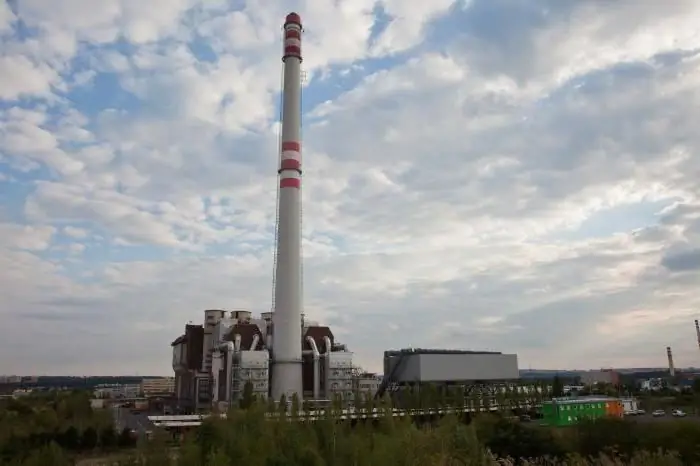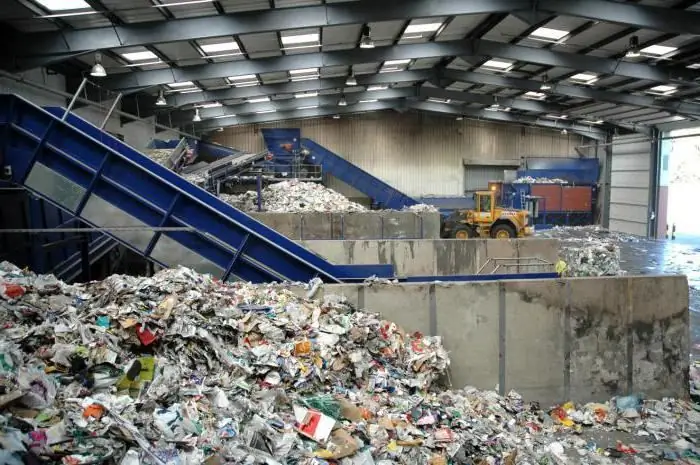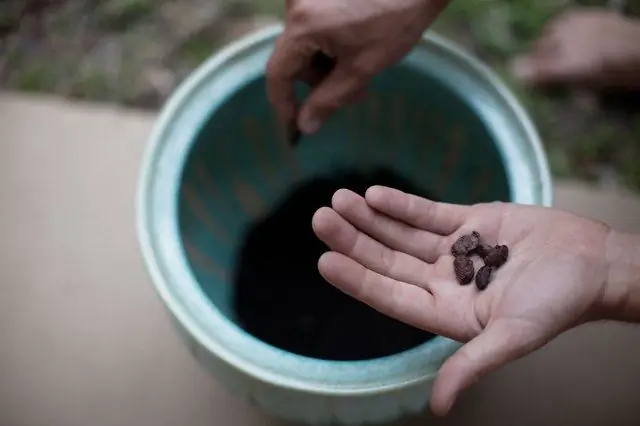2026 Author: Howard Calhoun | [email protected]. Last modified: 2025-01-24 13:10:35
In order to get a good harvest of grain and vegetable crops, for sowing, of course, you should use only planting material that meets the requirements of GOST. The sowing qualities of seeds primarily determine how quickly and correctly various agricultural plants will develop in the future.
Seed varietal qualities
It is this feature that agronomists pay attention to before planting any agricultural crops in the first place. Varietal qualities of seeds are determined:
- based on morphological features in appearance;
- by carrying out soil varietal control.
Field testing at the same time implies, first of all, a survey of crops for compliance with the rules of seed production and yield qualities. By varietal suitability, planting material for agricultural crops is classified into several groups (OS, RS, Rst, ES), each of which has its own GOST requirements.

What is seed quality
Using seeds that meet the standard in terms of varietal traits allows you to get the highest yields. However, before sowing, the planting material, of course, must also be checked for sowing qualities. In this regard, the seeds must also meet the requirements of GOST.
They call sowing qualities a set of properties and characteristics that determine the suitability of planting material for sowing. In this case, the seeds are checked for several indicators at once.
How are determined
Varietal planting material in any case should be germinating, not infected with insect larvae, fungi, etc. Sowing qualities of seeds of various kinds of agricultural crops are determined by:
- germination;
- cleanliness;
- energy growth;
- humidity;
- mass.
In some cases, the viability of planting material may also be determined.
Seed purity
During storage or transportation, planting material of different crops, unfortunately, can be partially mixed. Regulations allow this, but within certain limits. First of all, when determining the sowing qualities of seeds, it is found out how much impurities of planting material of other crops are contained in the control norm. In addition, they also check for the presence of weed seeds.

Guided in this case when determining the sowing qualities of GOST seeds, providing for the maximumallowable amount of impurities for each variety group.
germination
To determine this parameter, take a certain number of seeds and germinate them. Thus, laboratory germination is recognized. Its degree is determined in accordance with the ratio of normally germinated seeds to their total number in the sample. At the same time, such planting material is referred to as germinated, in which:
- root has grown no less than the length of the seed itself;
- sprout at least half the length of the seed (for wheat and rye).
Germinate seeds when determining laboratory germination in a thermostat at a temperature of 20-22 °C. This procedure usually lasts 7-8 days.
There is also such a thing as field germination. It is determined by the number of sprouts that appear in relation to the number of seeds sown. Typically, field germination is 5-20% less than laboratory.

What is vitality
This indicator is determined by staining the embryos in the seeds when ripe. Thus, forest planting material is checked very often. Potassium iodide, tetrazole and indigo carmine are used for seed coloring. The first two preparations are able to penetrate only into living seed cells, and the last one - only into dead ones.
The investigated planting material, when determining viability, is first soaked until swelling. Then the embryos are removed from the seeds and stained. In this case, the ratio of living and dead cells is checked by the luminescent method.

Growth energy
Of course, planting material must first of all comply with GOST. From the varietal and sowing qualities of seeds, among other things, depends on such a factor as the uniformity of germination. Growth energy is defined as the percentage of seeds that gave roots and sprouts for a specific period. Thus, planting material is usually checked for 3-4 days.
Of course, for planting in the fields it is supposed to use seeds with high vigor. If this figure is low, seedlings will subsequently appear slowly. Among other things, temperature and humidity conditions can change in the fields over a long period of time. For example, due to drought, many seeds may never germinate at all.
Sowing qualities of cereal seeds: moisture content
This indicator is usually not too high for quality seeds. Dry planting material is better stored, not damaged by insects and fungi. According to GOST standards, seed moisture for each crop should not exceed certain indicators:
- for legumes and grains - 15.5%;
- for flax and rapeseed - 12%;
- for winter crops - 12-15%, etc.
Mass
When determining the sowing qualities of seeds, among other things, pay attention to their size. Before sowing, planting material, among other things, is also weighed. The mass of 1000 seeds is further used to calculate the weight planting rate.
How to improve sowing quality: technologiesgrowing and harvesting
To obtain good planting material, a variety of activities can be carried out on farms. Seeds are taken from plants grown usually in separate areas. At the same time, care for such landings is carried out of the highest quality. In such areas, they make sure that the plants are well lit, watered and fertilized on time.
Sometimes seeds are also harvested from ordinary fields not designated for their cultivation. In this case, planting material is supposed to be taken only where the plants developed under the most favorable conditions. It is not allowed to take planting material from fallen crops.
Storage
The sowing qualities of seeds depend, among other things, on the conditions of their storage. Planting material collected in the fields must first undergo primary cleaning:
- from rubbish;
- broken grain;
- weed seeds.
Also, the seeds must be well dried and sorted. Planting material that has undergone such processing retains its fruitful properties better in the future.
Etching
Unfortunately, the planting material of various kinds of crops is infected with all sorts of fungi and insects. Therefore, the seeds are usually treated before planting. This procedure is most often performed by the dry method with moistening with no more than 10 liters of water for 1 ton of planting material.

Against the dusty head of cereals, among other things, in preparation for sowing,heat treatment of seeds is also carried out. Planting material in this case is first heated in water at a temperature of 28-32 ° C for 4 hours. Next, the seeds are placed in water at a temperature of 50-53 ° C for 7-10 minutes.
Seed hardening
Sowing indicators of seed quality can also be improved with the help of this procedure. Hardening not only makes seedlings more resistant to cold, but also allows you to increase productivity. Such seed treatment can be carried out using different technologies. The simplest method in this case is keeping the swollen planting material at a temperature of 0-1 ° C during the day. Also, sometimes planting material is alternately placed in the sun during the day for 6 hours and at night in a cold place for 18 hours. Each such cycle is repeated 3-4 times.
Drawing
Seeds of beets, vegetables, legumes can be subjected to such a procedure before planting. It consists in enveloping with a protective nutrient shell in a special apparatus. For drageeing, seeds of the same size are selected.

Use of stimulants
Such substances are used to increase the energy of seed growth. For this purpose, for example, sodium humate, Vympel, etc. can be used. Processing planting material in this way allows you to increase germination by about 15%. In addition, plants develop a powerful root system. The plant also has a 50% increase in the number of productive stems.
Instead of a conclusion
Checked sowing and varietal qualitiesseeds before planting crops must be mandatory. Otherwise, you will not be able to get a good harvest on the farm. It is necessary to use for planting only seeds that exactly meet the requirements of GOST.

And, of course, in order to get a good harvest, it is imperative to improve the quality of planting material before sowing by dressing, hardening, panning, etc.
Recommended:
Low-waste and waste-free technologies: definition, description, problems and principles

Problems of the harmful effects of industry on the environment have been worrying environmentalists for a long time. Along with modern means of organizing effective methods for the disposal of hazardous waste, options are being developed to minimize the initial damage to the environment
Waste incineration plant: technological process. Waste incineration plants in Moscow and Moscow region

Waste incinerators have long been controversial. At the moment, they are the cheapest and most affordable way to recycle waste, but far from the safest. Every year, 70 tons of garbage appears in Russia, which needs to be removed somewhere. Factories become a way out, but at the same time the Earth's atmosphere is exposed to enormous pollution. What waste incineration plants exist and is it possible to stop the waste epidemic in Russia?
Waste sorting complex: equipment for sorting and processing household waste

The article is devoted to waste sorting complexes. The features of this equipment, the technological steps performed, etc. are considered
Professional and personal qualities. Business and moral qualities of the leader

The importance of the professional, personal, moral and business qualities of each employee, both manager and subordinate, is obvious. They directly affect success in work, business, career development, networking and interaction with other people
Nigella sowing: photo, cultivation, sowing dates

Nigerushka in the common people is usually called onion seeds. Being planted in the ground, by the end of the season they give a small set. The latter next year can already be used for growing large heads. In some cases, you can get a real onion from the nigella sowing in one season

